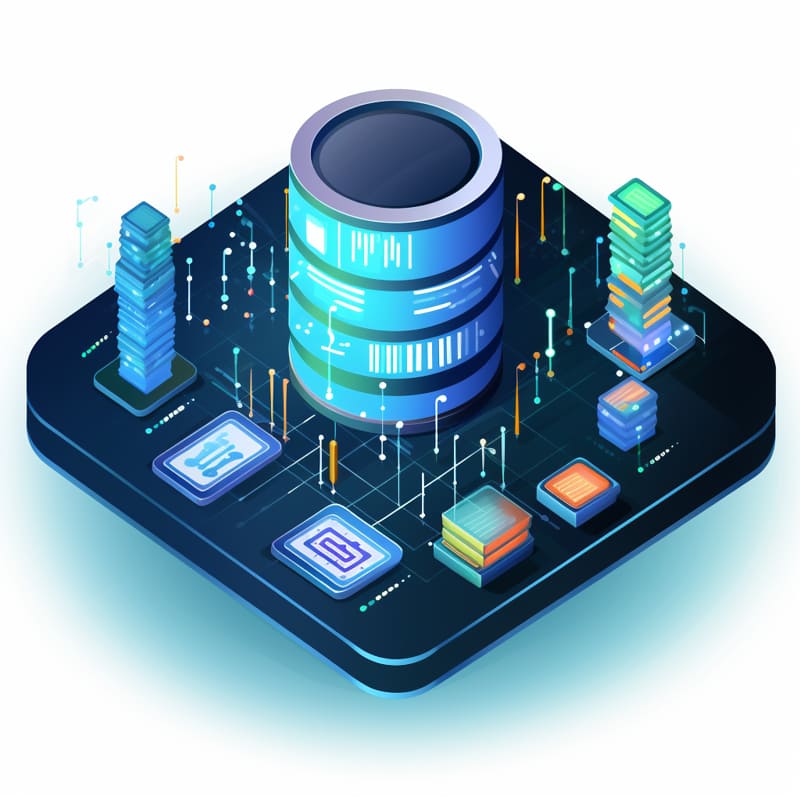Oracle GoldenGate Interview Questions
Our primary aim is to offer valuable and accurate knowledge to assist your Oracle GoldenGate journey. At Oracle GoldenGate, our mission is to promote fairness and positivity with blog posts dedicated to fairness.
Our content should be helpful and educational – we hope that Oracle GoldenGate provides all this for us! The software helps with database migrations, replications and consolidation.
Oracle GoldenGate is an essential solution for organizations needing to manage data across various databases and platforms, providing critical solutions in data maintenance across databases and platforms.
Here, we present an exhaustive list of interview questions related to Oracle GoldenGate, covering all aspects of this tool that may assist candidates in preparing for an Oracle GoldenGate interview andOracle GoldenGate interview questions for experienced.

1. What is Oracle GoldenGate?
Oracle GoldenGate is a product that provides a near-real-time transactional data application, allowing users to replicate data from one side to another.
2. What are the two types of architecture available in Oracle GoldenGate?
The two types of architecture available in Oracle GoldenGate are Classic and Microservices.
3. What is the difference between Classic and Microservices architectures?
The difference between Classic and Microservices architectures is that Classic involves one-way replication, while Microservices involves multiple sites involved in the replication process.
4. What are the available topologies for Oracle GoldenGate?
The available topologies for Oracle GoldenGate are unidirectional, bidirectional, and multi-dimensional.
5. What is unidirectional replication?
Unidirectional replication involves one-way data replication between sites A and B.
6. What is bidirectional replication?
Bidirectional replication means both sites are active, and the application can be connected to any of them.
7. What is multi-dimensional replication?
Multi-dimensional replication involves multiple sites involved in the replication process.
8. What is Oracle GoldenGate used for?
Oracle GoldenGate is used for data filtration, transformation, and replication without any data filtration or transformation.
It also supports data transformation, combining salary and commission columns from source to target.
9. Who is Oracle GoldenGate for?
Oracle GoldenGate is for database developers, data professionals, DBA apps, Oracle or non-Oracle database administrators, and PLC developers.
10. Is Oracle GoldenGate a popular tool?
Oracle GoldenGate is a popular tool, especially among top banks, telecoms, and large enterprises with big budgets.
11. Is there a separate license for Oracle GoldenGate?
Yes, Oracle GoldenGate is a separately licensed product, and organizations purchase licenses for a limited time, such as three or six months, to use for migration purposes.
12. What is the value of Oracle GoldenGate?
Oracle GoldenGate is a valuable tool for data replication, transformation, and cloud migration, making it useful for organizations looking for high-paying jobs.
13. What are the benefits of using GoldenGate?
The benefits of using GoldenGate include managing data and ensuring high-quality data management, offering a variety of architectures, and allowing for data filtration, transformation, and replication without any data filtration or transformation.
14. What is the purpose of migrating databases from on-premises to the cloud?
Migrating databases from on-premises to the cloud is crucial to consider the impact on customers’ bills and balances. Vodafone’s database could be down for a minute, causing customers to struggle to pay bills.
GoldenGate, a cloud-based solution, offers zero downtime for organizations.
15. What is the importance of having a reliable replication system for data?
A reliable replication system for data is essential to ensure data availability in different regions, mainly for developers and architects who need to upskill for better-paying jobs.
16. What is the role of GoldenGate in the job market?
Having GoldenGate in one’s resume can help stand out in the job market, demonstrating the individual’s ability to stay relevant and valuable in the ever-changing digital landscape.
17. How do trail files in Oracle GoldenGate work?
The trail files in Oracle GoldenGate store the data extracted from the source database and the data received from the remote database.
The local trail removes the data from the source database, while the remote trail stores the data received from the remote database.
18. What is the purpose of the Oracle GoldenGate microservices architecture?
The Oracle GoldenGate microservices architecture enables better integration with cloud applications and runs as a service. It also supports command.
19. Can you explain the capture process in Oracle GoldenGate architecture?
The capture process captures committed transactions and writes them to a trail file on the local machine. It then sends the data over the TCP/IP network and writes it to the remote trail.
The data from the process is then read by the golden get replica process and applied to the target data.
20. What is the difference between classic and integrated Oracle GoldenGate architecture extracts?
Classic capture reads data directly from transaction logs, while integrated capture includes a log minor database layer between the extract process and the extract process.
21. How does Oracle GoldenGate ensure data integrity in a bidirectional environment?
Oracle GoldenGate ensures data integrity by providing zero data loss in the environment. If a network fails between the source and target, the pump process will go down, saving until it has sent the data to the target.
When the network resumes, the pumping process continues from the same point where it ensures zero data loss.
22. What are the three processes in Oracle GoldenGate architecture?
The three processes in Oracle GoldenGate architecture are the manager process, extract replicate, and server collective process.
23. What are the two types of extracts available with Oracle GoldenGate?
The two extracts available with Oracle GoldenGate are classic and integrated.
Traditional capture reads data directly from transaction logs, while integrated capture includes a log minor database layer between the extract process and the extract process.
24. What is the purpose of the trail files in Oracle GoldenGate?
The trail files in Oracle GoldenGate store the data extracted from the source database and the data received from the remote database.
The local trail removes the data from the source database, while the remote trail stores the data received from the remote database.
25. What are the two types of OraclesGoldenGate architecture?
The two types of OraclesGoldenGate architecture are classic architecture and microservices architecture.
26. What are the six components of Oracle GoldenGate?
The six components of Oracle GoldenGate are classic architecture, microservices architecture, administration server, service manager, distribution server, and performance metrics server.

Oracle GoldenGate Training

The microservices architecture in Oracle GoldenGate is a REST A P I-based architecture that allows organizations to configure, monitor, and manage Oracle GoldenGate services using a user interface.
28. What is the difference between the administration server and the service manager in Oracle GoldenGate?
The administration server in Oracle GoldenGateallows users to configure GoldenGate extracts and replicates, distribute paths, and performance metrics server.
The service manager in Oracle GoldenGate is responsible for managing the data pump, collector process, and other components.

29. What is the role of the distribution server and receiver server in Oracle GoldenGate?
In the microservices architecture of Oracle GoldenGate, the distribution server replaces the data pump, and the receiver server returns the collector process.
The distribution server is responsible for receiving the data from the source system and applying it to the target system.
The receiver server writes the data to the local trail file, which is then read by the distribution server for further processing.
30. What is the choice between local capture and application in Oracle GoldenGate?
The choice between local capture and local application in Oracle GoldenGate is crucial for optimal performance and ease of management.
31. What is the function of the Oracle GoldenGate?
Oracle GoldenGate is a change data capture tool that works with Oracle or any other database. It was founded in 1995 and supports Oracle and non-Oracle database databases, including MySQL, DB2, SQL Server, and Postgres.
32. What does Oracle GoldenGate support the different architectures?
Oracle GoldenGate supports various architectures, including real-time, near real-time, and batch. Real-time architecture captures changes as they occur, near-real-time captures changes within a few seconds, and batch captures changes at a scheduled time.
33. What is the importance of personal experience in learning about technology?
Personal experience with different technologies can provide valuable insights and help individuals understand how they work and how they can be used.
It also allows individuals to tailor their learning to specific needs and goals.
34. What is the purpose of Oracle GoldenGate 21 C?
Oracle GoldenGate 21 C aims to introduce new features and provide updates to the change data capture tool. It includes improvements to the tool’s architecture, performance, and security.
35. What are the challenges administrators face when upgrading Oracle GoldenGate?
The challenges administrators face when upgrading Oracle GoldenGate include ensuring compatibility with the new version, identifying and resolving any issues that may arise during the upgrade process, and testing the latest version to ensure it meets the organisation’s needs.
36. What is the process of abridging Oracle GoldenGate?
The abridging Oracle GoldenGate involves reducing the size of the captured data to make it more manageable and efficient. This can be done by setting appropriate parameters and utilities.
37. What are the memory components in the Oracle database instance?
The memory components in the Oracle database instance include library cache, dictionary cache, and G.S.G.S.Tensor system.
38. What are the background processes in the Oracle database?
The background processes in the Oracle database include database writing, log writing, checkpoint, and other background processes.
39. What are the three types of files in an Oracle database?
The three types of files in an Oracle database are data file control files, lead log files, and archive log files.
40. What is the function of the Oracle GoldenGate process in an Oracle database?
The Oracle GoldenGateprocess in an Oracle database captures changes made to the source database, with the source being the redo log file, which is a backup of the archive log file.
41. What is the difference between committed and uncommitted transactions in an Oracle database?
Committed transactions are those that have been successfully executed and saved to the database, while uncommitted transactions are those that have failed or are still in progress.
42. What is the main reason for the popularity of Oracle GoldenGate in the market?
The main reason for the popularity of Oracle GoldenGatein the market is technical and financial reasons.
The technical reasons include real-time data replication with sub-second latency, while the economic reasons include its affordability and ease of use.
43. What are the advantages of Oracle GoldenGate?
One of the main advantages of GoldenGate is its ability to move large volumes of data efficiently and without a single point of failure. Its technical reasons include being an Oracle product, which is still the leader in the database field.
44. What is Oracle GoldenGate’s technical advantage?
Oracle GoldenGate’s technical advantage is that it is an Oracle product, which is still the leader in the database field.
45. What are the target platforms for Oracle GoldenGate?
Oracle GoldenGate supports heterogeneous environments across different databases and hardware types, allowing it to replicate data on any platform target.
46. What is Oracle GoldenGate’s end-user license agreement?
When Oracle GoldenGate comes under an end-user license agreement, it is free to use any Oracle GoldenGate product based on terms and conditions on any number of servers or machines.
47. What is Oracle GoldenGate’s main application?
Oracle GoldenGate’s main application is managing large volumes of data efficiently and effectively, offering high performance with minimal impact.
48. What is Oracle GoldenGate’s popularity?
Oracle GoldenGate is famousfor organisations looking to improve their database management systems.
49. What is Oracle GoldenGate’s role in managing data?
Oracle GoldenGate plays a significant role in managing large volumes of data efficiently and effectively, offering high performance with minimal impact.
50. What are the technical reasons for Oracle GoldenGate’s popularity?
The technical reasons for Oracle GoldenGate’s popularity include being an Oracle product, which is still the leader in the database field, and its ability to handle data sent in real-time with sub-second latency.
51. What is Oracle GoldenGate’s application for ETL?
Oracle GoldenGate supports ETL (Extract, Transform, Load) operations.
52. What was Oracle GoldenGate initially designed for?
Oracle GoldenGate was initially designed for scribe databases in the banking domain, but it has since expanded to support other databases and OS platforms like Windows, Linux, and Solaris.

Oracle GoldenGate Online Training

The cost of implementing high availability or ZDM solutions using Oracle GoldenGate depends on the implementation and the number of CPUs being used.
The price also depends on the license and the number of used CPUs.

54. Can customized solutions like high availability or zero downtime be implemented in a classic architecturesetup?
Depending on the specific requirements, customized solutions, like high availability or zero downtime, can be implemented in a classic architecture setup.
55. Does Oracle GoldenGate have a built-in feature for zero downtime of gradation and migration?
No, Oracle GoldenGatehas no built-in feature for zero downtime of gradation and migration. This feature requires design and implementation in an environment with higher availability.
56. What is the difference between microservices and classic architecture?
Microservices architecture is a newer architecture that allows for managed troubleshooting and configuration through the G U I interface, allowing better integration with cloud applications.
On the other hand, classic architecture is the older one, widely used and available for Oracle and non-Oracle data.
57. What is Ruby GoldenGate Very Data?
Ruby GoldenGate Very Data is another Oracle GoldenGate family product that verifies data between source and target objects.
This feature can help identify discrepancies between source and target objects, requiring disk upgrades and seasons.
58. Is integrated extract supported over integrated into the GoldenGate environment?
Classic and microservices coexist from 12.3 to 21c in the GoldenGate environment. However, the choice between integrated and traditional extract depends on the specific environment and requirements.
The integratedextract is faster, supports many data types, and requires less extract configuration. The answer to the question is whether integration is supported over combined extract.
59. What is the difference between integrated and non-integrated extract in Oracle GoldenGate?
The integrated extract is used for regular datasets, while the non-integrated extract is used for non-Oracle databases. The combined extract is deprecated and only for standard datasets.
Non-integrated extract processes use CDC extract for SQL server data. Both architectures will use classic extract except for the SQL server.
60. How does Oracle GoldenGate design?
Oracle GoldenGate is a database replication tool that captures committed and non-committed transactions. It is designed to capture only uncommitted transactions and not committed ones.
It also knows when to go to re-julio and archive logs.
61. What is the difference between H20 and genius architecture in Oracle GoldenGate?
H20 architecture is an older version of the classic architecture, while genius architecture is a newer version of the traditional architecture.
62. What is the latest version of the Classic architecture in Oracle GoldenGate?
The latest version of the Classic architecture was introduced in 2017.
63. What are Oracle GoldenGate’s two types of extract processes?
The two types of extract processes are integrated extract and different types of replicates:non-integrated or classic integrated replica, coordinated replica, and parallel replica.
64. What are the key features of Oracle GoldenGate?
The key features of Oracle GoldenGate include real-time data moment reduction, enabling consistency and improving performance.
65. What is the difference between the classical and integrated architectures of Oracle GoldenGate?
The difference between the classical and integrated architectures of Oracle GoldenGate is that the integrated architecture is deprecated and only supported for regular datasets.
In contrast, the classical architecture supports replication, filtering, and transforming data from one database to another.
66. What is the Oracle GoldenGate architecture?
Early loads and source-side extraction comprise Oracle GoldenGate architecture. They extract committed transactions from the source database to the local trail file.
It supports static, continuous, and change synchronisation.
67. What is the difference between initial loads and change synchronisation in the extract process?
The extract procedure initially loads static data from source tables and objects. Extracting DML and DDL operations from the source database keeps the source and target databases inconsistent in change synchronisation.
68. What is the role of the collector process in the Oracle GoldenGate architecture?
The GoldenGate application’s target system’s collection procedure is multi-stage. It maps the extract and collector operations one-to-one using source data.
The collector process replicates output from the source extract process to the target trail file.
69. What are the two types of configurations for the replicate process in the Oracle GoldenGate architecture?
Replica setups include initial load (one-to-one mapping) and change synchronisation. The replica loads static data from the source system to the target object using the native database interface or ODB C drivers.
Before applying transactions to target database systems, replication might filter, manipulate, or map data.
70. What is the role of the manager process in the Oracle GoldenGate architecture?
The GoldenGate replication manager process controls and maintains other processes. It starts dynamic processes, supports port numbers, and starts processes. Managers create event, error, and threshold reports.
71. What are trail files in the Oracle GoldenGate architecture?
Trail files are local on the source system and remote on the target system. They minimise the load on the source database by extracting only committed changes in the trail files.
Trail files extract records from source objects in the GoldenGate system.
72. What is a data pump in the Oracle GoldenGate architecture?
Data pumps and optional GoldenGate processes store collected data in a local trail file as secondary extracts on the source side. If extract-collector mapping is impossible, a data pump can transmit data to the collector.
The data pump extracts GoldenGate source object records.
73. What is the purpose of checkpoints in Oracle GoldenGate?
Checkpoints in Oracle GoldenGate store the current rewrite position of a process on disk for recovery purposes and ensure data changes are captured by extract and applied to the target by replicates.
They provide fault tolerance and enable multiple extract and replicate processes to read from the same fields.
74. What is Oracle GoldenGate’s commit sequence number (CSN)?
GoldenGate creates a CSN to ensure transaction and data integrity. Uniquely identifies a transaction’s database commit time.
CSNs must place extracts in transitional logs, reposition apps on the trail, and more.
75. How is Oracle GoldenGate’s architecture configured?
Oracle GoldenGate can perform online extract or replicate processes until users stop them and preserve recovery checkpoints.
These procedures remove and repeat DML and DDL operations to synchronize source and database.
76. What is the difference between a checkpoint and a data pump in Oracle GoldenGate?
Oracle GoldenGate checkpoints and data pumps are analogous but distinct. Process checkpoints store their disk rewrite position for recovery.
DML and DDL activities are extracted and replicated via a data pump.
77. What are the types of databases that Oracle GoldenGate supports?
Both homogeneous and heterogeneous databases have transaction logs in Oracle GoldenGate. The instance provides metadata for Oracle databases, while the database contains the database file.
78. How does Oracle GoldenGate capture data from the source database?
Oracle GoldenGate reads redo or archive log files to capture data from the underlying database.
Five situations trigger the log writer process to write redo log buffer data to the file.

79. What is the purpose of transaction logs in databases?
Database transaction logs record changes made to the database, including committed and uncommitted transactions. These logs ensure data consistency and integrity and enable recovery if a failure or corruption occurs.
80. What is Oracle GoldenGate, and what are its main features?
A separately licensed product, Oracle GoldenGate ensures database availability, real-time data access for reporting, zero downtime, abbreviation, and migration to Oracle databases and applications.
The central banks, ATM networks, financial data services, telecommunications companies, and food and medicine retailers use it.
Oracle GoldenGate is an effective solution for replicating data between databases, offering real-time availability of information with improved integrity and reduced downtime.
To successfully deploy and administer Oracle GoldenGate, a thorough knowledge of its architecture, components, and best practices should be fostered throughout implementation and maintenance activities.
At an interview, you must demonstrate your expertise in using Oracle GoldenGate and its ability to optimise performance. Give examples of where and how Oracle GoldenGate was implemented within real-world situations while improving data management capabilities within organisations.
Best wishes on your journey through Oracle GoldenGate!

Oracle GoldenGate Course Price


Sindhuja
Author